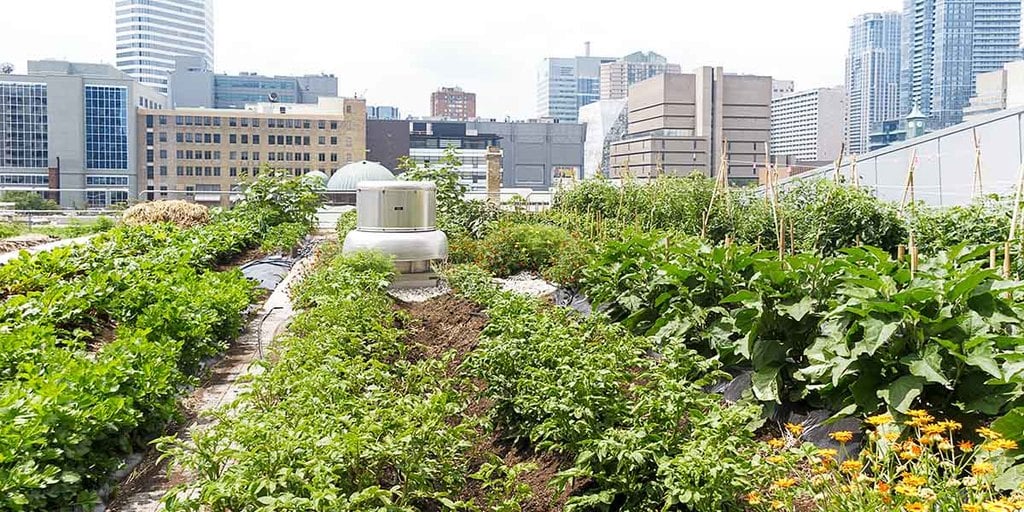The Main Principles Of City Blooming
The Main Principles Of City Blooming
Blog Article
Some Known Details About City Blooming
Table of ContentsCity Blooming - TruthsWhat Does City Blooming Mean?Indicators on City Blooming You Should Know3 Simple Techniques For City BloomingThe Single Strategy To Use For City Blooming
Fascinated in growing food available in the City of Chicago? Thinking of starting a community garden? Adjustments to the Chicago Zoning Ordinance allow agricultural uses like neighborhood gardens and city farms in numerous parts of the city. Below is a list of regularly asked inquiries regarding the guidelines and guidelines that cultivators should take into consideration when planning a city farming job.
The zoning modification does not customize any other codes handling composting, building licenses, buying or leasing City owned home, business licenses or ecological contamination. There are existing codes that regulate these concerns and they remain completely result and might be appropriate to your job. Community gardens are commonly had or managed by public entities, public companies or community-based companies and kept by volunteers.
Urban ranches expand food that is planned to be offered, either on a nonprofit or for-profit basis. Due to their industrial purpose, city ranches call for a service certificate. Yes. A community garden is enabled to offer excess create that was grown on website if the sales are accessory or secondary to the yard's main objective described above.
The Buzz on City Blooming
The quantity of garden compost product can not exceed 25 cubic lawns at any provided time according to the criteria in 7-28-715 of the City's Municipal Code. Because the dirt at a lot of new garden sites requires amending, garden compost, soil, wood chips, or various other products can be acquired to construct or boost the growing space.

If a structure license is required then the hoophouse will certainly be taken into consideration an accessory structure. You can discover even more concerning the structure license requirements by speaking to the Division of Structures. The 25,000-square-foot dimension limitation is planned to avoid a single area garden from controling an offered block or interfering with the block's existing residential or business personality.
The limitation does not relate to gardens found in Public Open Space (POS) districts. Can there be greater than one area garden that is 25,000 square feet on a solitary block? Yes. The size limitation relates to individual yards, not to specific blocks. No. Fence is not needed, nevertheless, yards that have large auto parking areas might be called for to install fencing or other landscape design features.
City Blooming Can Be Fun For Everyone
B1 & B2 districts need that all business usage activities be performed inside. R districts restrict commercial task. The guidelines mirror the purpose and intent of the Zoning Code. Is fence required for urban farms? Yes. Fencings might be required, in addition to landscape design and testing, for sure parking lot and outdoor work or storage space locations relying on area and the details activity taking location.
Urban farms require structure licenses and zoning authorizations prior to building and construction (urban gardening). Various other forms of city testimonial may be required depending on details structures, activities, size, landscape design, licensing, public heath and stormwater administration issues.
The Department of Business Affairs and Consumer Defense can assist establish the particular kind of company permit that's called for. Off street parking is required for most business projects in Chicago. The needed number of parking spaces is based on the number of staff members working on website and not the square footage of the growing room.
8 Easy Facts About City Blooming Explained

Yes. An urban farm can market garden compost material generated on site, nonetheless, the procedure must adhere to the laws in 7-28-715 of the Chicago Municipal Code. Yes. Aquaponic systems are enabled inside on urban ranches in lots of zoning districts. Nevertheless, a zoning evaluation and structure permit is required in order to mount frameworks or systems and a business license is needed as defined over.
As much as five hives or swarms of honey bees may be kept as an accessory use. Beekeepers need to register with the Illinois Department of Agriculture. For even more information about the recommended zoning amendment you might call the Division of Housing and Economic Growth, Bureau of Preparation and Zoning at 312.744.8563.
Farming in cities and urban areas A metropolitan ranch in Chicago. Urban farming refers to various methods of growing. https://fliphtml5.com/homepage/tkxth/cityblooming/, handling, and distributing food in city locations. The term likewise relates to the location activities of pet husbandry, tank farming, beekeeping, and horticulture in a city context. Urban agriculture is distinguished from peri-urban agriculture, which happens in backwoods beside suburban areas.
Not known Details About City Blooming
, that look for to form social networks established on a shared values of nature and community holism. These networks can create indoor plants by method of formal institutional assistance, becoming incorporated into neighborhood community planning as a "transition town" motion for lasting metropolitan development.
Some of the initial proof of city farming comes from Mesopotamia.
Report this page